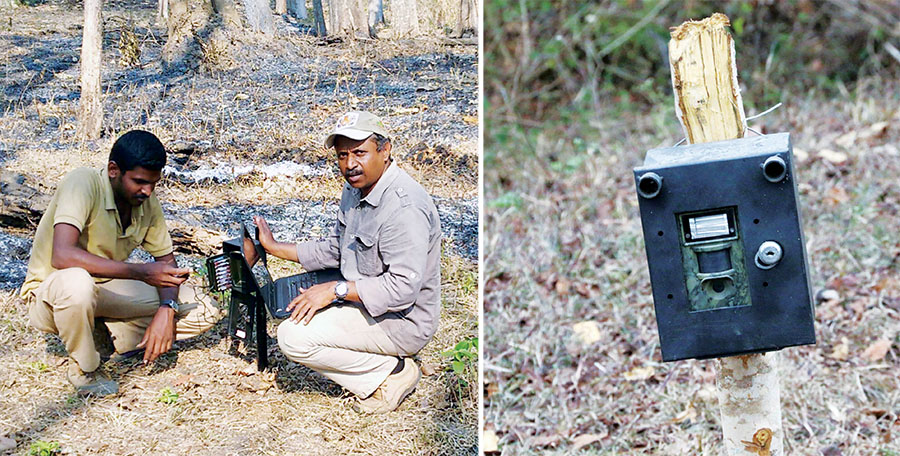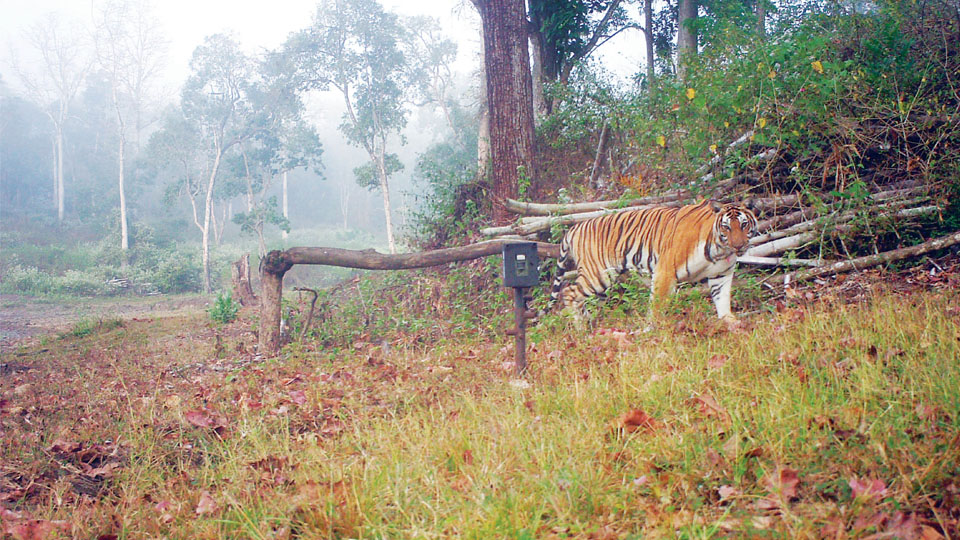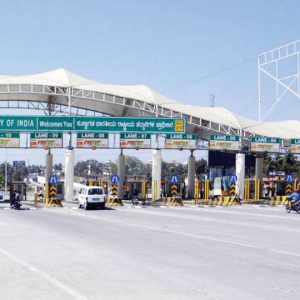Nagarahole National Park has 11.82 tigers per 100 square kilometres and Bandipur has 7.7
Mysore/Mysuru: In what is said to be the ‘world’s largest effort invested in any wildlife survey till date’, Corbett Tiger Reserve of Uttarakhand has recorded the highest tiger density amongst 50 tiger reserves in India — it has 14 tigers per 100 square kilometres which is highest in India.
The second place in terms of tiger density has been secured by Nagarahole Tiger Reserve with 127 tigers followed at a close third place by Bandipur Tiger Reserve with 126 tigers and fourth place by Bandhavgarh and Kaziranga Tiger Reserves with 104 tigers each.
As per the ‘Status of Tigers, Co-predators, and Prey in India’ released yesterday, in terms of density, Nagarahole Tiger Reserve has 11.82 tigers per 100 square kilometres while Bandipur has 7.7 tigers per 100 square kilometres. The Biligiri Ranganathaswamy Tiger Reserve has 4.96 tigers per 100 square kilometres.
Based on 2018 enumeration
The ‘Status of Tigers, Co-predators, and Prey in India’ is based on the 2018 tiger enumeration exercise, the summary of which was released last year by Prime Minister Narendra Modi and yesterday’s report was released by Minister for Environment, Forest and Climate Change Prakash Javadekar in New Delhi on the eve of International Tiger Day that is celebrated today (July 29).
In the world, there are over 3,900 tigers in 13 countries including India, Bangladesh, Vietnam, Indonesia and South China as the feline is extensively hunted down by poachers. Of them, India has 2,967 tigers. The tiger census, conducted once in four years, in 2018 pegged the population of tigers across India at 2,967, with Madhya Pradesh emerging at the top of charts with 526 and Karnataka a close second with 524. The third spot went to Uttarakhand, in the forests of which State were counted 442 tigers.

Counting and matching stripes
Across all tiger reserves of Karnataka, there were 1,500 camera traps in place. Forest officers say that conducting a tiger census is an onerous task. Estimating the number of tigers using images captured through camera traps is not easy since the offices and field employees have to crosscheck all of them for duplication and segregate them accordingly.
As per the data, the Old Mysore region has 363 tigers. The region has four tiger reserves — Bandipur Tiger Reserve, Nagarahole National Park, BRT Tiger Reserve and Male Mahadeshwara Tiger Reserve (yet to be officially named). Also, the Madikeri Wildlife Division, Madikeri Territorial Division and Virajpet Territorial Division have considerable big cat population.
33 percent rise
The 33 percent rise in tiger numbers in India is the highest ever recorded between cycles which stood at 21 percent between 2006 and 2010 and 30 percent between 2010 and 2014. The rise in tiger numbers was in conformity with the average annual growth rate of tigers since 2006, said the report.
Bandipur Tiger Reserve that is spread across 1,020 square kilometres and Nagarahole Tiger Reserve spread across 843 square kilometres including 200 square kilometres of buffer zone have 253 tigers as per 2018 census. Now the number has increased with fresh births after the census, said Project Tiger Bandipur Tiger Reserve T. Balachandra.

Cameras and felines
In Bandipur, the Forest Department placed 380 camera traps in three stages. In Nagarahole, 400 camera traps were set up at two stages. At the 572-square-kilometre BRT Tiger Reserve in Chamarajanagar District, 1,200 points were identified and cameras were placed to record 55 to 65 tigers. At the Male Mahadeshwara Tiger Reserve spread across 920 square kilometres, 550 camera traps were set to record the presence of 20 tigers.
In sync with Government of India’s “Digital India” initiative, the census data was collected using an Android based application- M-STrIPES (Monitoring system for Tigers’ Intensive Protection and Ecological Status) and analysed on the applications’ desktop module.
35 million images
As per the report, across India, the tiger census was conducted for 15 months involving survey of 3,81,400 square kilometres of forested habitats, 5,22,996 kms of walk by State Forest officials, laying of 3,17,958 habitat plots, totalling a human investment of 5,93,882 man days.
Besides, cameras were placed in 26,760 locations which gave a total of 35 million images of wildlife including 76,523 images of tigers. Segregation of these images was possible in a short time because of use of artificial intelligence software, the report reveals.
Many anti-poaching measures
Founder of the Wildlife Conservation Foundation Rajkumar Devaraje Urs attributed the recognition for the tiger census on the global stage to the groundwork of the volunteers and forest staff. More than 330 volunteers supplemented the efforts of the Forest Department personnel at the Bandipur Tiger Reserve, where more than 380 camera traps were set up.
He attributed the significant rise in numbers of tigers in Bandipur and Nagarahole to the conservation and anti-poaching measures initiated by the Forest Department. The density of prey animals were also analysed and were found to be high enough to sustain the predator population in good numbers. Also, educating and involving tribals and villagers living in the periphery of the Tiger Reserves contributed to the increase in numbers, he added.








Can you please elaborate as to how it is possible to have “11.82 tigers per 100 square kilometres” “7.7 tigers per 100 square kilometres.” “4.96 tigers per 100 square kilometres.” . Correct me if i am wrong, but i think you can have either 11 or 12, 7 or 8, and 4 or 5 tigers, unless we are talking percentages (same mistake three times???). Makes me wonder how accurate your other reports and articles are.